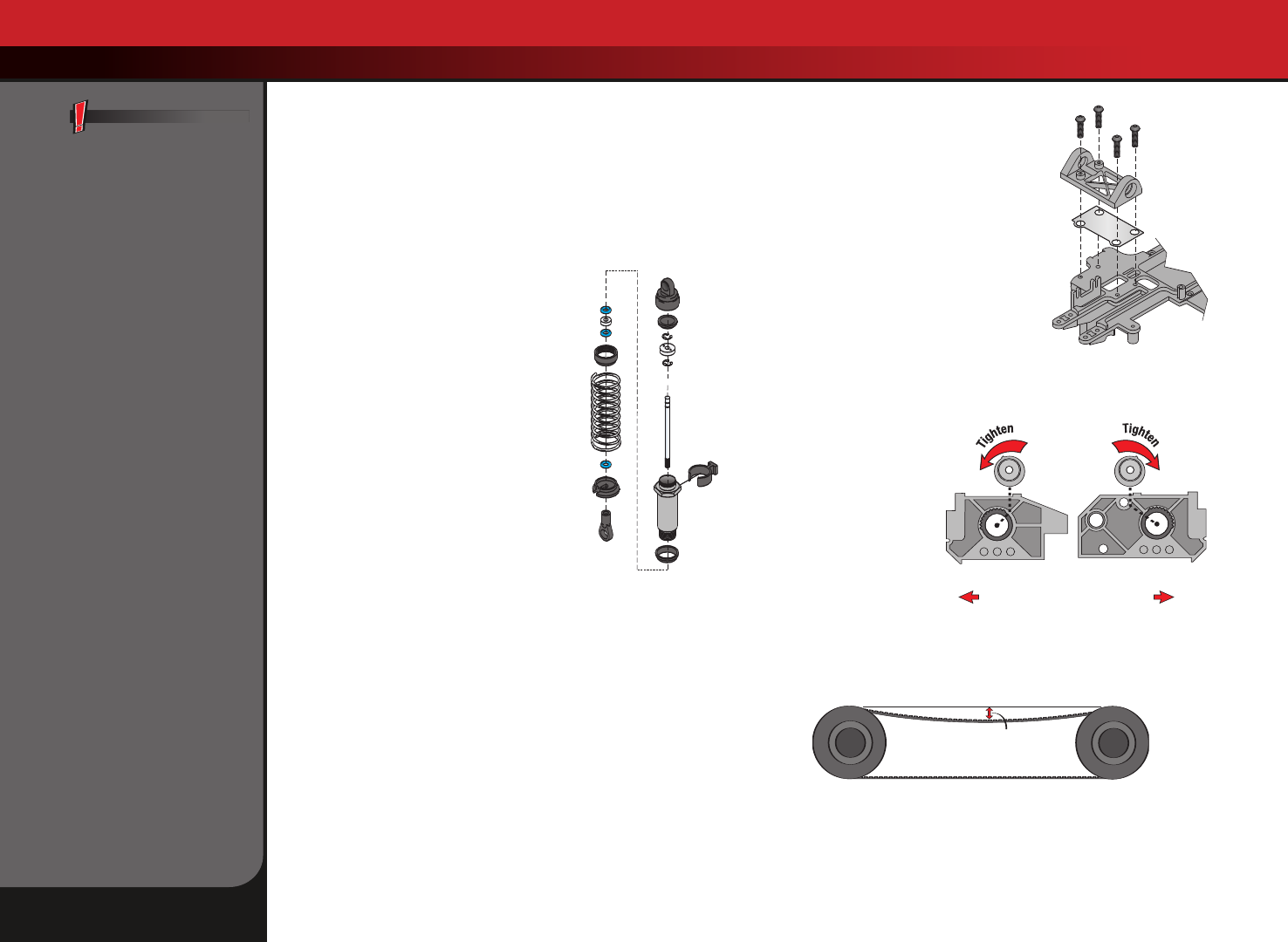
34
•
Nitro 4-Tec 3.3
Adjusting Your Nitro 4-Tec 3.3
At no time should the
body of the car strike the
ground or interfere with
the suspension or tires.
Either situation will
cause extremely
unpredictable handling.
Toe In
Set the steering trim on your transmitter to neutral. Now, adjust your
tie rods so that both wheels are pointing straight ahead and are
parallel to each other (0 degrees toe in). This will ensure the same
amount of steering in both directions. If you run out of adjustment,
then the steering servo will have to be re-centered (see centering your
servos on page 35).
Fine Tuning the Shocks
The four shocks on your Nitro 4-Tec have the
most influence on its handling. Whenever you
rebuild your shocks, or make any changes to
the pistons, springs or oil, always do it
carefully and in pairs (front or rear). Piston
head selection depends on the range of oil
viscosities that you have available. For
example, using a one-hole piston with a
lightweight oil will give you the same
dampening as a two-hole piston with heavier
oil. We recommend using the one-hole
pistons with a range of oil viscosities from
10W to 50W (available from your hobby
shop). The thinner viscosity oils (30W or less)
flow more smoothly and are more consistent,
while thicker oils provide more dampening.
Use only 100% pure silicone shock oil to prolong seal life.
The ride height for Nitro 4-Tec can be adjusted by adding or removing
the clip-on spring pre-load spacers. Instead of adding spacers to
increase stiffness, use stiffer springs. Adjust the ride height so that the
suspension arms are slightly above being parallel to the ground. Note
that changes in ride height will occur when the changes in damper
angle or spring rates are made. You can compensate for ride height
changes by changing the pre-load spacers on the dampers. Generally
speaking, ride height should be set as low as possible without causing
significant bottoming of the chassis. Also, in order not to disturb
cornering balance, front and rear tire height diameters should be
equal. Replace excessively worn tires.
Belt Tension Adjustments
The Nitro 4-Tec’s front and middle drive
belts are designed to have a high initial
tension. During the break-in period, the
drive belts and pulleys will “wear in” and
the belt tension will gradually decrease.
The front and middle belt tensions can be
tightened by inserting shims under the
front bearing block. Do not tighten the
front belt tension unless there is more
than 0.25 inch (6mm) deflection at the
center of the belt (see drawing). To
tighten the belt, add the 0.1mm shim first
and retest. If the belt is still loose, remove
the 0.1mm shim and add the 0.2mm shim
and retest.
The rear belt tension is
adjustable via belt tension
cams in the right and left
rear side plates. The rear
belt in the Nitro 4-Tec
transmits most of the
engine’s power. Because of
the high loading of the rear
belt, the tension should be
checked every 3-4 hours
(20-25 tanks of fuel) of running. If the rear belt can be deflected more
than 0.25¨ (6mm) (see illustration), the belt tension cams should be
rotated rearward to the next eccentric slot.
Left side plate
(Bulkhead)
Right side plate
(Bulkhead)
Rear of car Rear of car
.25¨ (6mm)
Using Belt
Adjustment Shims


















